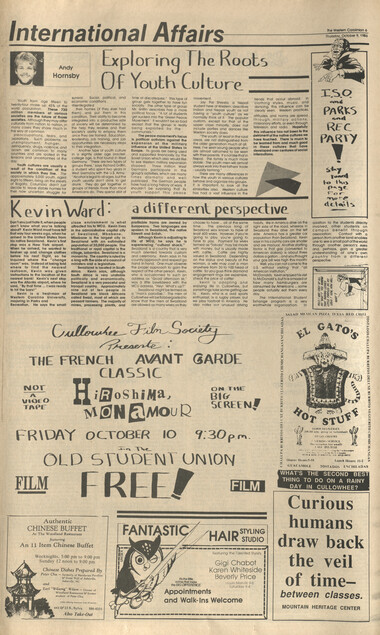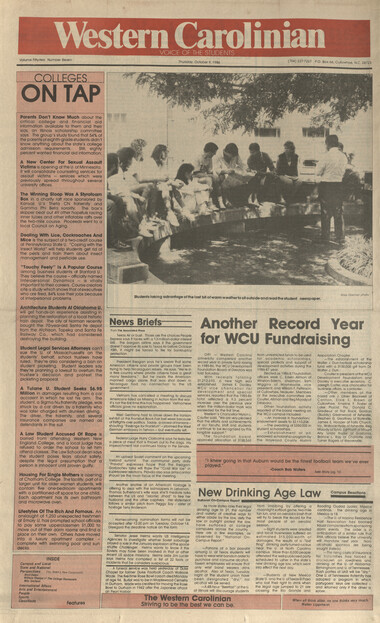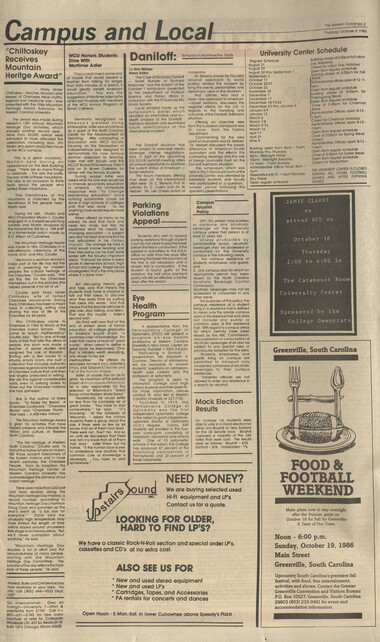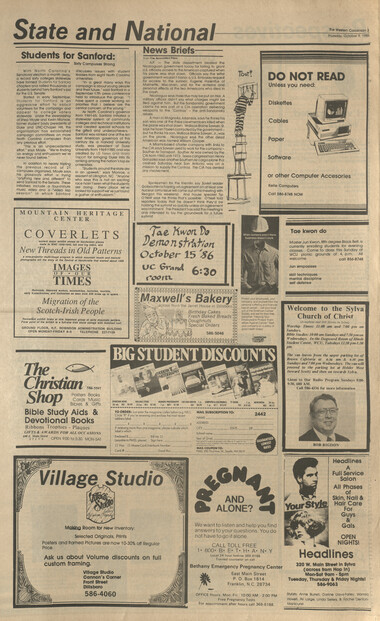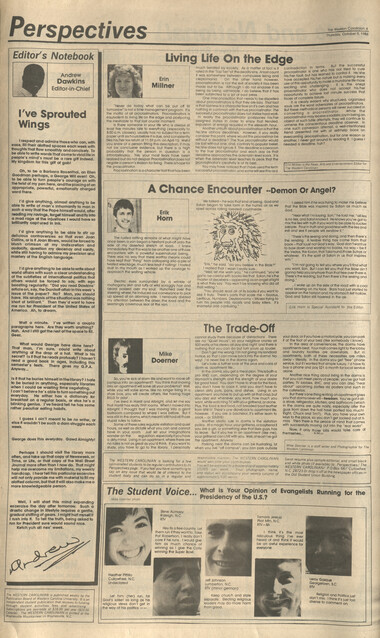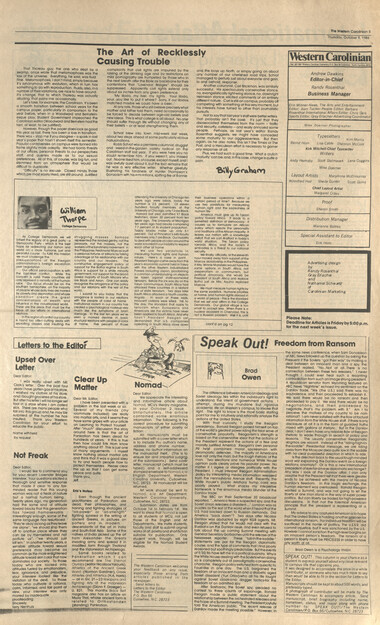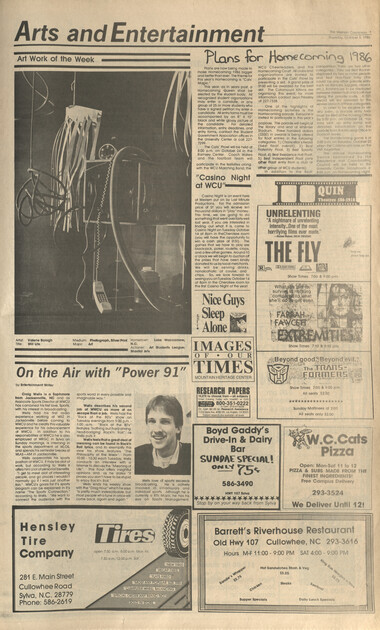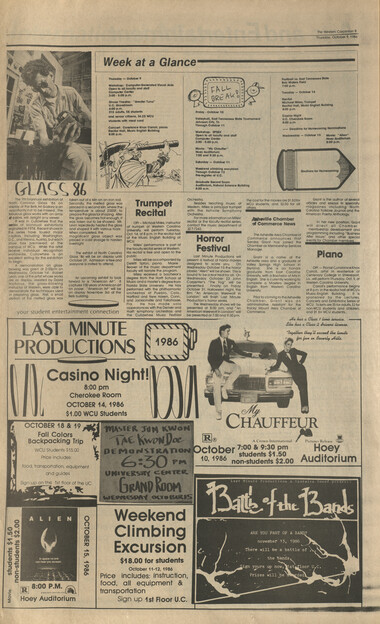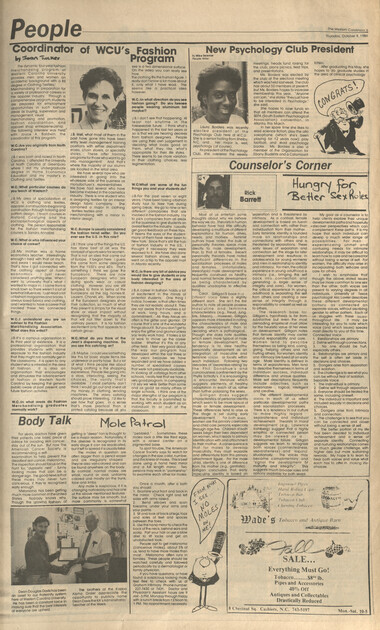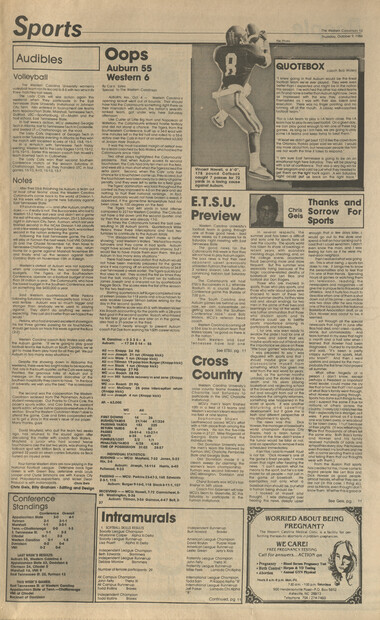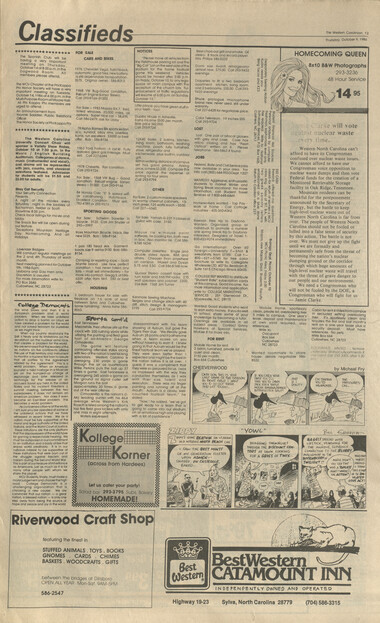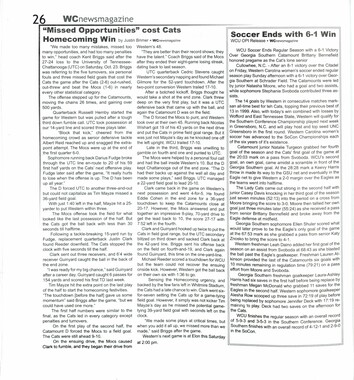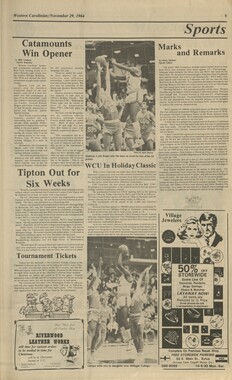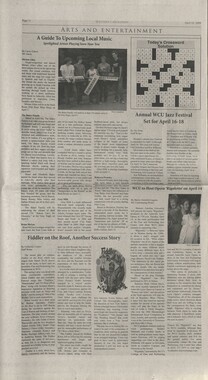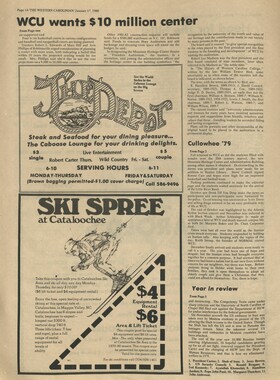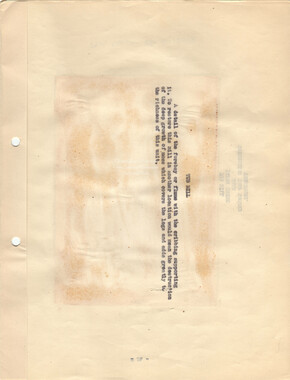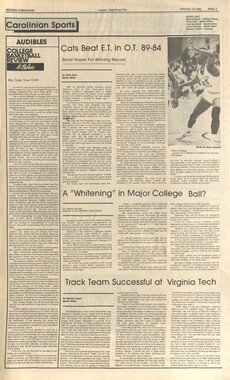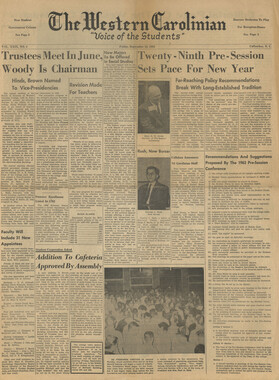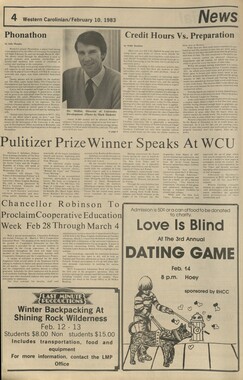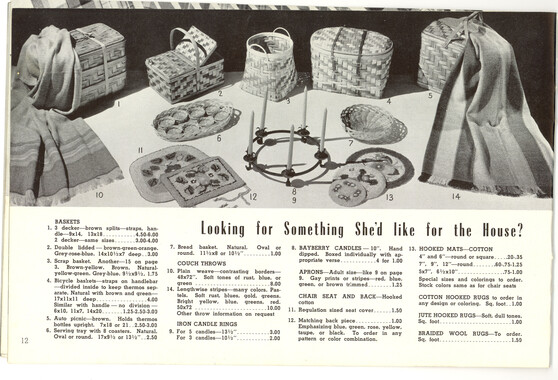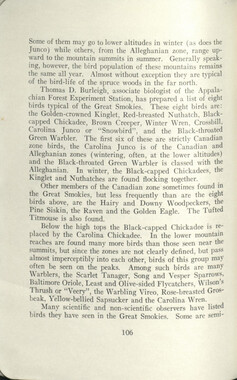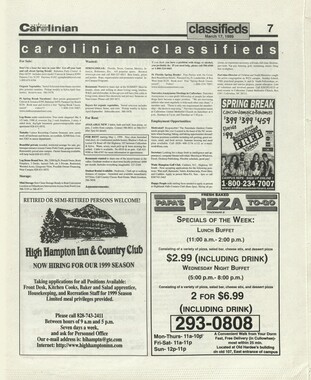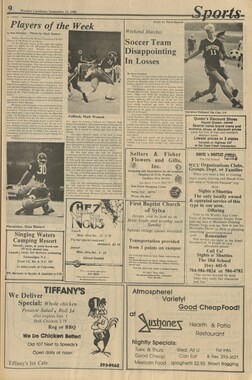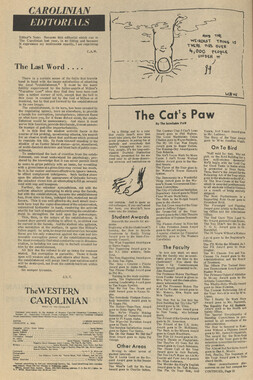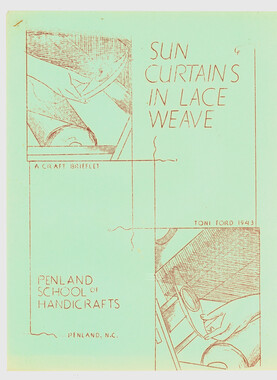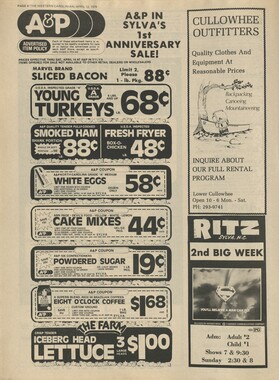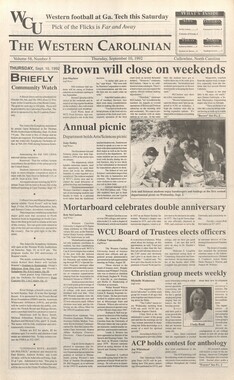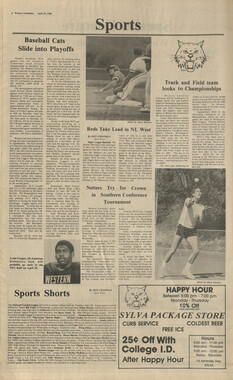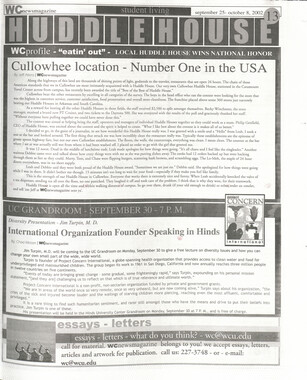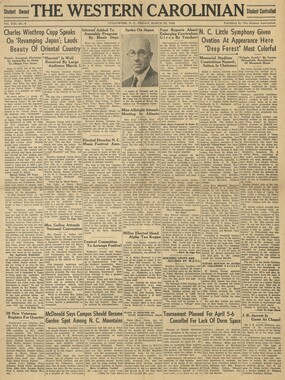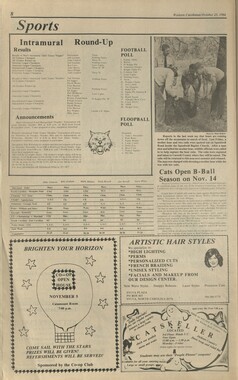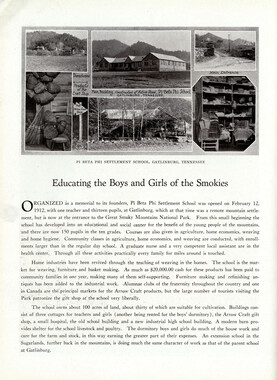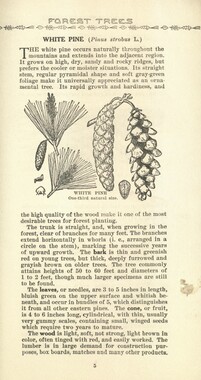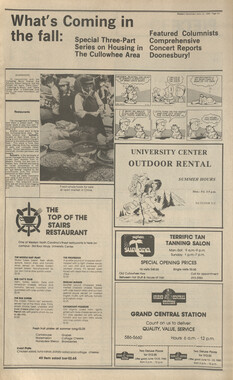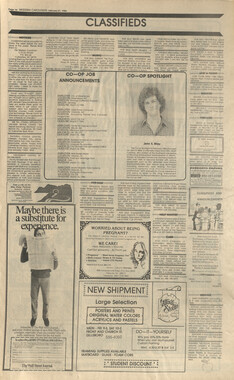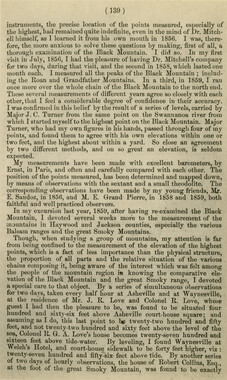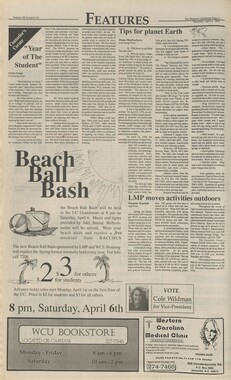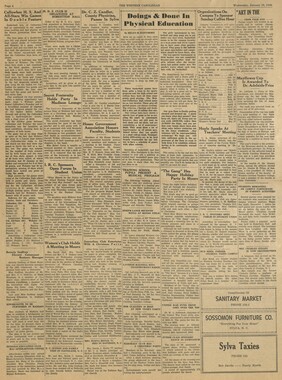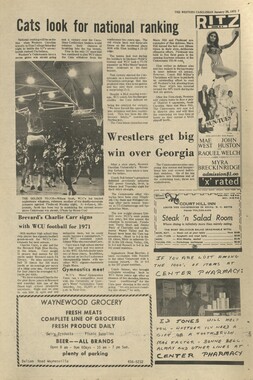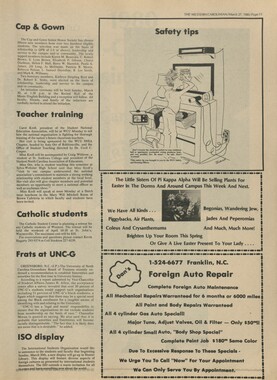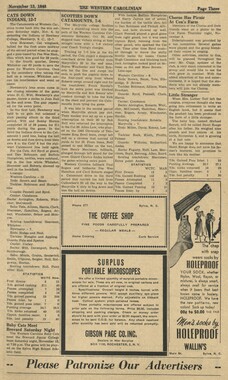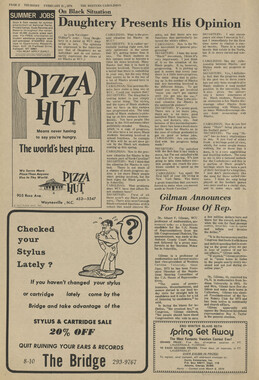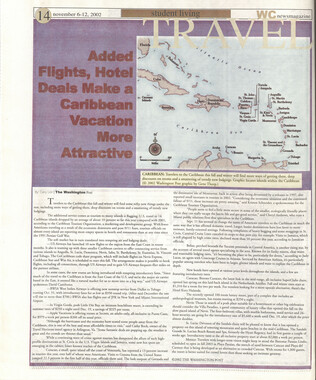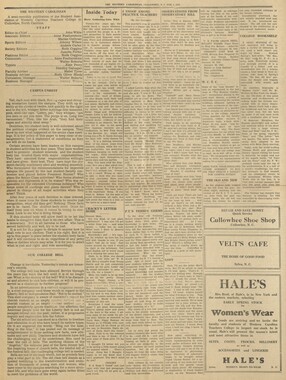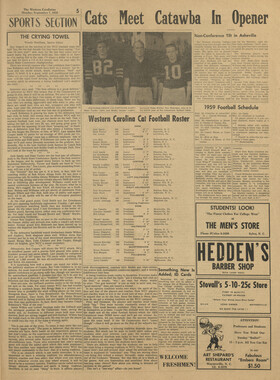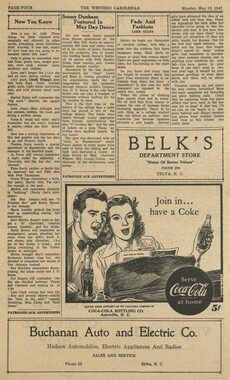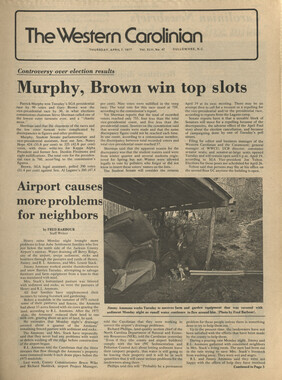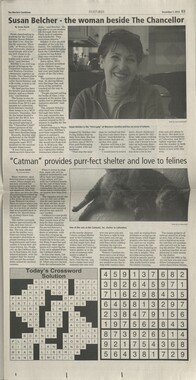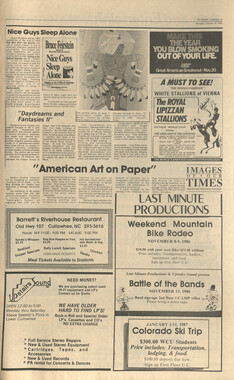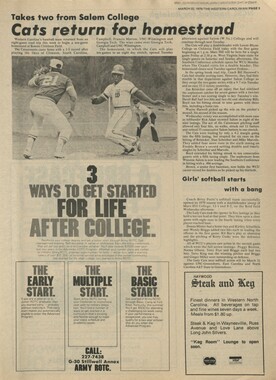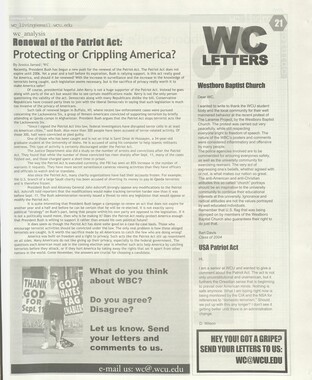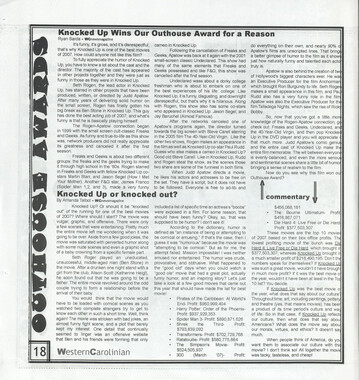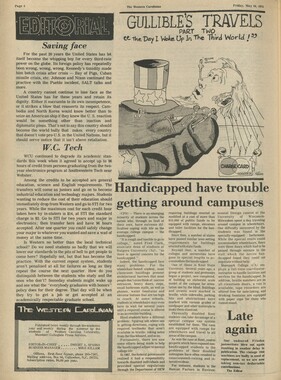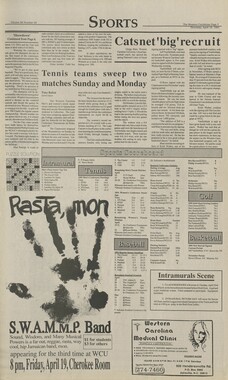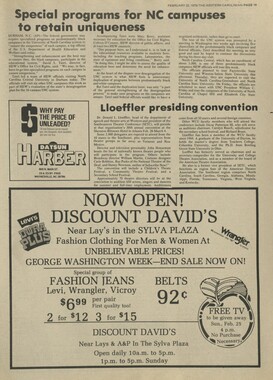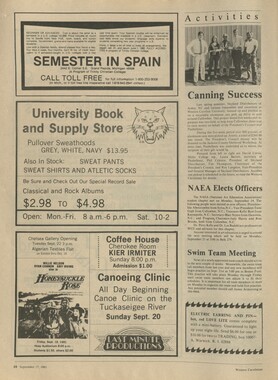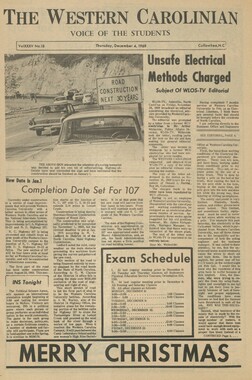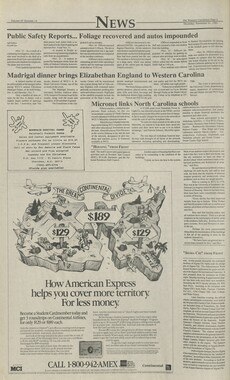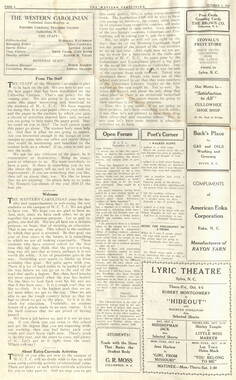Western Carolina University (21)
View all
- Canton Champion Fibre Company (2308)
- Cherokee Traditions (291)
- Civil War in Southern Appalachia (165)
- Craft Revival (1942)
- George Masa Collection (137)
- Great Smoky Mountains - A Park for America (3080)
- Highlights from Western Carolina University (422)
- Horace Kephart (973)
- Journeys Through Jackson (159)
- LGBTQIA+ Archive of Jackson County (89)
- Oral Histories of Western North Carolina (318)
- Picturing Appalachia (6617)
- Stories of Mountain Folk (413)
- Travel Western North Carolina (153)
- Western Carolina University Fine Art Museum Vitreograph Collection (129)
- Western Carolina University Herbarium (92)
- Western Carolina University: Making Memories (738)
- Western Carolina University Publications (2491)
- Western Carolina University Restricted Electronic Theses and Dissertations (146)
- Western North Carolina Regional Maps (71)
- World War II in Southern Appalachia (131)
University of North Carolina Asheville (6)
View all
- Allanstand Cottage Industries (62)
- Appalachian National Park Association (53)
- Bennett, Kelly, 1890-1974 (1463)
- Berry, Walter (76)
- Brasstown Carvers (40)
- Carver, George Washington, 1864?-1943 (26)
- Cathey, Joseph, 1803-1874 (1)
- Champion Fibre Company (233)
- Champion Paper and Fibre Company (297)
- Cherokee Indian Fair Association (16)
- Cherokee Language Program (22)
- Crowe, Amanda (40)
- Edmonston, Thomas Benton, 1842-1907 (7)
- Ensley, A. L. (Abraham Lincoln), 1865-1948 (275)
- Fromer, Irving Rhodes, 1913-1994 (70)
- George Butz (BFS 1907) (46)
- Goodrich, Frances Louisa (120)
- Grant, George Alexander, 1891-1964 (96)
- Heard, Marian Gladys (60)
- Kephart, Calvin, 1883-1969 (15)
- Kephart, Horace, 1862-1931 (313)
- Kephart, Laura, 1862-1954 (67)
- Laney, Gideon Thomas, 1889-1976 (439)
- Masa, George, 1881-1933 (61)
- McElhinney, William Julian, 1896-1953 (44)
- Niggli, Josephina, 1910-1983 (10)
- North Carolina Park Commission (105)
- Osborne, Kezia Stradley (9)
- Owens, Samuel Robert, 1918-1995 (11)
- Penland Weavers and Potters (36)
- Roberts, Vivienne (15)
- Roth, Albert, 1890-1974 (142)
- Schenck, Carl Alwin, 1868-1955 (1)
- Sherrill's Photography Studio (2565)
- Southern Highland Handicraft Guild (127)
- Southern Highlanders, Inc. (71)
- Stalcup, Jesse Bryson (46)
- Stearns, I. K. (213)
- Thompson, James Edward, 1880-1976 (226)
- United States. Indian Arts and Crafts Board (130)
- USFS (683)
- Vance, Zebulon Baird, 1830-1894 (1)
- Weaver, Zebulon, 1872-1948 (58)
- Western Carolina College (230)
- Western Carolina Teachers College (282)
- Western Carolina University (2008)
- Western Carolina University. Mountain Heritage Center (18)
- Whitman, Walt, 1819-1892 (10)
- Wilburn, Hiram Coleman, 1880-1967 (73)
- Williams, Isadora (3)
- Cain, Doreyl Ammons (0)
- Crittenden, Lorraine (0)
- Rhodes, Judy (0)
- Smith, Edward Clark (0)
- Appalachian Region, Southern (3032)
- Asheville (N.C.) (1945)
- Avery County (N.C.) (26)
- Blount County (Tenn.) (195)
- Buncombe County (N.C.) (1680)
- Cherokee County (N.C.) (283)
- Clay County (N.C.) (556)
- Graham County (N.C.) (238)
- Great Smoky Mountains National Park (N.C. and Tenn.) (525)
- Haywood County (N.C.) (3573)
- Henderson County (N.C.) (70)
- Jackson County (N.C.) (4925)
- Knox County (Tenn.) (35)
- Knoxville (Tenn.) (13)
- Lake Santeetlah (N.C.) (10)
- Macon County (N.C.) (421)
- Madison County (N.C.) (216)
- McDowell County (N.C.) (39)
- Mitchell County (N.C.) (135)
- Polk County (N.C.) (35)
- Qualla Boundary (982)
- Rutherford County (N.C.) (78)
- Swain County (N.C.) (2185)
- Transylvania County (N.C.) (270)
- Watauga County (N.C.) (12)
- Waynesville (N.C.) (86)
- Yancey County (N.C.) (72)
- Aerial Photographs (3)
- Aerial Views (60)
- Albums (books) (4)
- Articles (1)
- Artifacts (object Genre) (228)
- Bibliographies (1)
- Biography (general Genre) (2)
- Cards (information Artifacts) (38)
- Clippings (information Artifacts) (192)
- Copybooks (instructional Materials) (3)
- Crafts (art Genres) (622)
- Depictions (visual Works) (21)
- Design Drawings (1)
- Digital Moving Image Formats (2)
- Drawings (visual Works) (185)
- Envelopes (101)
- Exhibitions (events) (1)
- Facsimiles (reproductions) (1)
- Fiction (general Genre) (4)
- Financial Records (12)
- Fliers (printed Matter) (67)
- Glass Plate Negatives (381)
- Guidebooks (2)
- Internegatives (10)
- Interviews (823)
- Land Surveys (102)
- Letters (correspondence) (1045)
- Manuscripts (documents) (618)
- Maps (documents) (177)
- Memorandums (25)
- Minutes (administrative Records) (59)
- Negatives (photographs) (6090)
- Newsletters (1290)
- Newspapers (2)
- Notebooks (8)
- Occupation Currency (1)
- Paintings (visual Works) (1)
- Pen And Ink Drawings (1)
- Periodicals (194)
- Personal Narratives (10)
- Photographs (12977)
- Plans (maps) (1)
- Poetry (6)
- Portraits (4568)
- Postcards (329)
- Programs (documents) (181)
- Publications (documents) (2444)
- Questionnaires (65)
- Relief Prints (26)
- Sayings (literary Genre) (1)
- Scrapbooks (282)
- Sheet Music (2)
- Slides (photographs) (402)
- Songs (musical Compositions) (2)
- Sound Recordings (802)
- Specimens (92)
- Speeches (documents) (18)
- Tintypes (photographs) (8)
- Transcripts (329)
- Text Messages (0)
- A.L. Ensley Collection (275)
- Appalachian Industrial School Records (7)
- Appalachian National Park Association Records (336)
- Axley-Meroney Collection (2)
- Bayard Wootten Photograph Collection (20)
- Bethel Rural Community Organization Collection (7)
- Blumer Collection (5)
- C.W. Slagle Collection (20)
- Canton Area Historical Museum (2110)
- Carlos C. Campbell Collection (462)
- Cataloochee History Project (64)
- Cherokee Studies Collection (4)
- Daisy Dame Photograph Album (5)
- Daniel Boone VI Collection (1)
- Doris Ulmann Photograph Collection (112)
- Elizabeth H. Lasley Collection (1)
- Elizabeth Woolworth Szold Fleharty Collection (4)
- Frank Fry Collection (95)
- George Masa Collection (173)
- Gideon Laney Collection (452)
- Hazel Scarborough Collection (2)
- Hiram C. Wilburn Papers (28)
- Historic Photographs Collection (236)
- Horace Kephart Collection (861)
- Humbard Collection (33)
- Hunter and Weaver Families Collection (1)
- I. D. Blumenthal Collection (4)
- Isadora Williams Collection (4)
- Jesse Bryson Stalcup Collection (47)
- Jim Thompson Collection (224)
- John B. Battle Collection (7)
- John C. Campbell Folk School Records (80)
- John Parris Collection (6)
- Judaculla Rock project (2)
- Kelly Bennett Collection (1482)
- Love Family Papers (11)
- Major Wiley Parris Civil War Letters (3)
- Map Collection (12)
- McFee-Misemer Civil War Letters (34)
- Mountain Heritage Center Collection (4)
- Norburn - Robertson - Thomson Families Collection (44)
- Pauline Hood Collection (7)
- Pre-Guild Collection (2)
- Qualla Arts and Crafts Mutual Collection (12)
- R.A. Romanes Collection (681)
- Rosser H. Taylor Collection (1)
- Samuel Robert Owens Collection (94)
- Sara Madison Collection (144)
- Sherrill Studio Photo Collection (2558)
- Smoky Mountains Hiking Club Collection (616)
- Stories of Mountain Folk - Radio Programs (374)
- The Reporter, Western Carolina University (510)
- Venoy and Elizabeth Reed Collection (16)
- WCU Gender and Sexuality Oral History Project (36)
- WCU Mountain Heritage Center Oral Histories (25)
- WCU Oral History Collection - Mountain People, Mountain Lives (71)
- WCU Students Newspapers Collection (1923)
- Western North Carolina Tomorrow Black Oral History Project (69)
- William Williams Stringfield Collection (2)
- Zebulon Weaver Collection (109)
- African Americans (390)
- Appalachian Trail (35)
- Artisans (521)
- Cherokee art (84)
- Cherokee artists -- North Carolina (10)
- Cherokee language (21)
- Cherokee pottery (101)
- Cherokee women (208)
- Church buildings (190)
- Civilian Conservation Corps (U.S.) (111)
- College student newspapers and periodicals (2012)
- Dams (108)
- Dance (1023)
- Education (222)
- Floods (63)
- Folk music (1015)
- Forced removal, 1813-1903 (2)
- Forest conservation (220)
- Forests and forestry (1198)
- Gender nonconformity (4)
- Great Smoky Mountains National Park (N.C. and Tenn.) (181)
- Hunting (47)
- Landscape photography (25)
- Logging (122)
- Maps (83)
- Mines and mineral resources (9)
- North Carolina -- Maps (18)
- Paper industry (38)
- Postcards (255)
- Pottery (135)
- Railroad trains (72)
- Rural electrification -- North Carolina, Western (3)
- School integration -- Southern States (2)
- Segregation -- North Carolina, Western (5)
- Slavery (5)
- Sports (452)
- Storytelling (243)
- Waterfalls -- Great Smoky Mountains (N.C. and Tenn.) (66)
- Weaving -- Appalachian Region, Southern (280)
- Wood-carving -- Appalachian Region, Southern (328)
- World War, 1939-1945 (173)
Western Carolinian Volume 52 Number 11, October 9, 1986
Item
Item’s are ‘child’ level descriptions to ‘parent’ objects, (e.g. one page of a whole book).
-
-
International Affairs The Western Carolinian 6 Thursday, October 9, 1986 The Roots Exploring Of Youth Culture Youth from age fifteen to twenty-four make up 45% of the world population. These 730 million members of various societies are the future of those societies. Although they may differ culturally from nation to nation, in many cases they share much in the way of common preoccupations, fears, ana aspirations. Such problems as jnemployment, hunger, delinquency, drugs, violence, and racism are common to many countries and are rootea in the tensions ana uncertainties of the day Youth cultures are usually a result of the condition of the society in which they live. The approximately 5,000 youth, aged eight to fifteen, living on the streets of Bogota, Columbia didn't just decide to leave stable homes for their now uncertain struggle for survival. Social, political, and economic conditions disentegrated their homes (if they ever had them) and put them in this condition. Their ability to become integrated into a productive side of society will be determined by the help they receive and their society's ability to employ them once they are trained. Education, leadership, job training, and job opportunities are necessary steps to their integration. Another type of youth culture in a slightly older age bracket, college age, is that found in West Germany. "There are two types of groups there," says Richard Griffin, a student who spent two years in West Germany with the U.S. Army. "Alcohol is legal to all ages, but the youth usually don't drink to get drunk. They do get together in groups of friends more than most Americans do. They spend alot of time at discoteques." This type of group gets together to have fun socially. The other type of group Mr. Griffin describes has a more political focus. "A lot of stuaents get sucked into the Green Peace Movement' It wouldn't be so bad except that the group is really being exploited by the communists." The peace movement's focus is political activism against the expansion of the military influence of the United States in Europe. Its goals are being used and supported financially by the Soviet Union which also wouia like to see Western military expansion stopped. Three million West Germans participate in the group's activities, which are many times dramatic and well publicized. The German people have had a long history of wars. It shouldn't be surprising that its youth support this peace movement. Jay Pal Shresta, a Nepali student here at Western, describes Indian ana Nepali youth as not having a "youth culture" as we normally think of it. The popular custom, except for that of the upper class minority, does not include parties and dances like Western society aoes. "The youth, at least in the rural areas, are not distinguished from the older generation much at all. Here, I've seen young people who are almost ashamed to be seen with their parents. It's not like that in Nepal. The family is much more stable. The youth men will almost always work into theirfathers' trade - usually farming." There are many differences in how the youth in various cultures behave and organize into groups. It is important to look at the similarities also. Western culture has had a vast influence in the trends that occur abroad. In clothing styles, music, and dancing, this influence can be clearly seen. Western practices, attitudes, and norms are spread through military actions, missionary efforts, or even through television and radio. Hopefully this influence has not been to Ihe detriment of the native cultures we have touched. There is much to be learned from and much good in these cultures that have developed over centures of social interactions. KevinWard: a different perspective RFC PARTy 1 Don't you just hate It, when people don't know what you're talking about? Kevin Ward must have felt that way four weeks ago, when he arrived in the United States from his native Swaziland. Kevin's first stop was a New York airport. When he arrived, he wanted to freshen up and change clothes before his next flight, so he inquired where the "change room" was. Instead of being told where to find the nearest restroom, Kevin was given instructions to the location of Ihe nearest bank! Kevin's next stop was the Atlanta airport, where he said, "By that time ... I was ready to hit the bars!" Kevin is a freshman at Western Carolina University, majoring in Parks and Recreation. He says the small close environment Is what attracted his to WCU. Kevin lives in me administrative capital city of Swaziland, Mbabane. Mbabane is the largest city in Swaziland with an estimated population of 20,000 people. The traditional or royal capital is the village, Lobamba. Swaziland is a monarchy. The country is ruled by a king with the aide of a council of ministers and a legislature. Swaziland is located in South Africa. Kevin says, although South Africa is very unstable politically and economically, Swaziland is a very peaceful and tranquil country. Approximately nine out of ten people in Swaziland are black Africans called Swazi, most of which are peasant farmers. The majority of mines, processing plants, and profitable frams are owned by Europeans. Two languages are spoken in Swaziland, the native Siswari and Enlish. Although Kevin is adjusting to life at WCU, he says he is experiencing "cultural shock." Swaziland is a country that is very much oriented towards custom and ceremony. Kevin says in his country approach and respect go hand in hand. One must observe the proper approach to gain the respect of the other person. Kevin, who is accustomed to such an address as "Good afternoon sir," was a little bewildered with the WCU address, "Hey! What's up?" Swaziland might be termed as a "man's paradise." The men of Cullowhee will be flabbergasted to know that the men of Swaziland are allowed as many wives as they choose to have ... all at the same time. The previous king of Swaziland was known to have at least 600 wives. However, if you're going to play, you're going to have to pay. Payment for wives termed as "lobola" may be made with money, but is usually made with cattle. Cattle are highly valued in Swaziland. Depending on the status and beauty of the woman, a wife may cost a man anywhere from 30 to 100 head of cattle. So you guys think diamond engagement rings are expensive, check the price of cattle! kevin is adapting and enjoying life in Cullowhee, but somethings take some getting use to. Kevin, who is a avid sports enthusiast, is a rugby player, but we play football in America. He also notes our unusual driving habits. We in America drive on the right side of the road, whereas in Swaziland they drive on the left side. America has a greater car population than Swaziland. Kevin says in his country cars are smaller and are manual. Another startling factor is that gas (converted to American dollars) is about three dollars a gallon... and you thought your gas bill was high this month! Well, you can not come to the U.S. without visiting that "all American institution," McDonalds. Kevin enjoyed his visit to McDonald's, but hi is amazed at how many hamburgers are consumed by Americans ... some people actually eat them every day. The International Student Exhange program is a very worthwhile organization. In addition to the students directly involved, other students on campus benefit through association. Contact with a person from another land enables one to see a small part of the world through another person's eyes and, perhaps, gain a greater understanding of one's own jDOuntry from a different perspective. 0>€aA^^^C9C^^5-JKX^_ 131** _ SCREEN^ THE FRENCH AVAMT GARDE CLASSIC To ftnaoshiH** srcT* FR\DAY OCTOBER IO 7.30pm OLD STUDENT UMON < a < x u z u. < U < X o E u o H X o 2 X 83 a X O r- X OS —' CO <r B, _J •J < X o. SALAD MrMCAN PIZZA TEXAS RED C Hill DORM Dtl.IVEHIF.fi ($8.00 mln. qrntip or individual) TO (JO ORDt RS ' UIHINC; SI.RVICE (No ntirafttoii too small) < All : 293 3332 h. .... t <■»! ,.'•.,),■ i,». . ^I.i|| rh* '.,i.rt«f« I'M .!»»(,.' .., b, W. U (mpn IM IR * IMNr 1>I BMI tf>l> I |> HP.QUIIUFD Dinner Hours:5-I0 (UIACAMOI.E FREE/ Lunch Hours: 11-2 TOSTADOS ENCHILADAS o (/! H > o o X > r r" "is > X SB H o c m x pi 99 (• SB X H o PI f) T> PI S3 H O n z FILM WHAT'S THE SECOND BEST THING TO DO ON A RAINY _ DAY IN CULLOWHEE? Authentic CHINESE BUFFET At The Woodland Restaurant featuring An 11 Item Chinese Buffet Weeknights, 5:00 pm to 9:00 pm Sunday 12 noon to 9:00 pm Chinese Dishes Prepared By Peter Chu — formerly of Mandarian Pavilion cjf Great Wall of Asheville, Asheville, NC and Earl "Wilsong" V/ilson - Owner of Woodland Restaurant IS former student of Peter Chu. (AI»o offering American food off mtnu) 441 6sr 23 S., Sylva 586-4331 Also Take-Out FANTASTIC UA|DSTYLING 1/M K STUDIO Featuring the Talented Stylists It's the little extras that mate the BIG DIFFERENCE. Gigi Chabot Karen Whiteside Beverly Price Hours Mon-Fri 9-6 Saturday 9-4 Appointments and Walk-Ins Welcome i Curious humans draw back the veil of time- between classes. MOUNTAIN HERITAGE CENTER
Object
Object’s are ‘parent’ level descriptions to ‘children’ items, (e.g. a book with pages).
-
The Western Carolinian is Western Carolina University's student-run newspaper. The paper was published as the Cullowhee Yodel from 1924 to 1931 before changing its name to The Western Carolinian in 1933.
-
